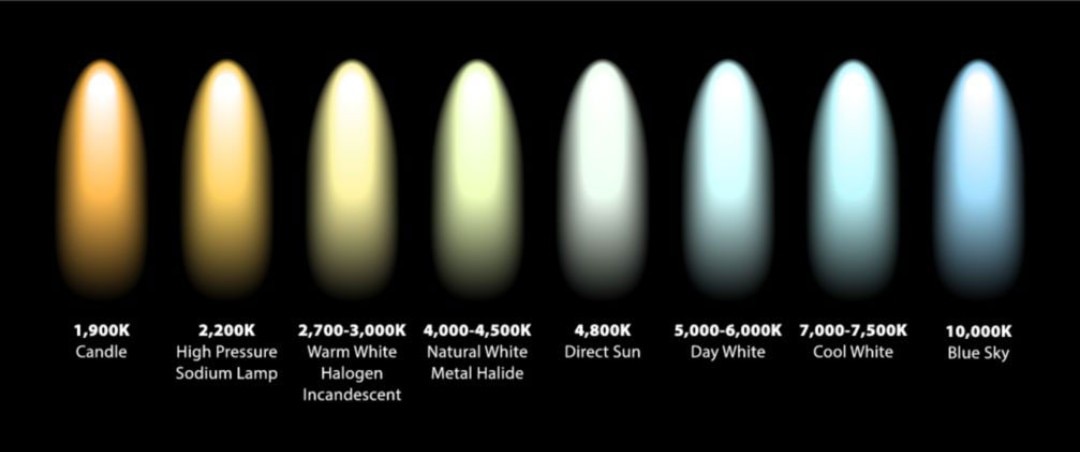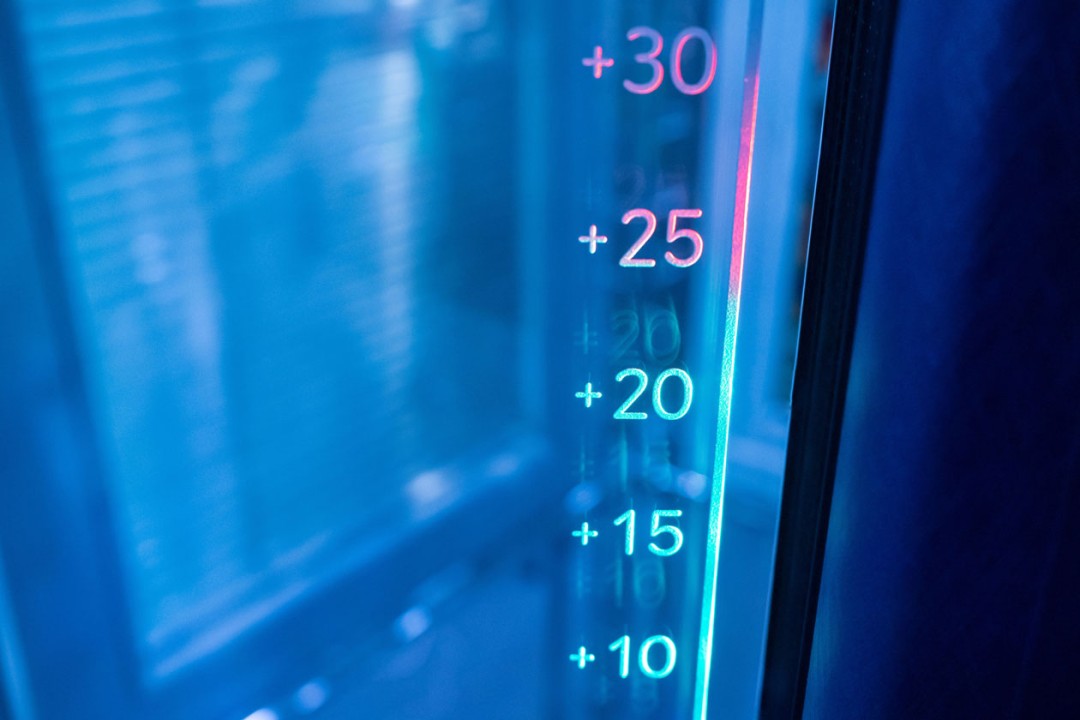MENÚ
ES | EUR
ES | EUR
-
- Centrífugas de sobremesa
- Centrífugas de suelo
- Centrífugas refrigeradas
- Microcentrífugas
- Centrífugas multiuso
- Centrífugas de alta velocidad
- Ultracentrífugas
- Concentrador
- High-Speed and Ultracentrifugation Consumables
- Accesorios
- Tubos
- Placas
- Gestión de dispositivos
- Gestión de muestras e información
- Productos IVD
No se han encontrado resultados
Sugerencias de búsqueda
Environmental Aspects
Leer más
Leer menos

Working in a cold, dark, and noisy lab?
Whether we notice it directly or not, working in a comfortable, ergonomic environment can make a big difference to our daily life. Ergonomics is particularly important in labs, where there are a lot more things to consider compared to offices. Here, we take a look at aspects of ergonomics that are easily overlooked and see how light, noise, temperature, and air quality can contribute to a comfortable workplace.Whether it’s at home, in the car, the office or the lab – ergonomic considerations are everywhere. Nearly all spaces and appliances we use have been designed with ergonomics in mind. However, in many ways, lab work is different from our other activities. When working in the lab, we often sit or stand in uncomfortable positions doing work that requires a high level of concentration – all of which highlights the need for an ergonomically designed workplace.When asked about ergonomics, people often think about odd-looking office chairs or maybe the design of pipettes and other commonly used lab equipment. However, product design from a user perspective is just one of the three ‘spheres’ of laboratory ergonomics that make up a comfortable workplace:The first sphere is the direct interaction between the user and the instrument, e.g. an ergonomically designed lid handle of a PCR cycler. The next range is the personal work space and its organization at the bench. The third sphere describes the workflow and all related more general aspects of the working environment which influence the daily work.
Optimal working environments
Environmental aspects of the laboratory include temperature, lighting, noise, and air quality. These factors are largely determined by the design of the lab itself and to some extent the placement of equipment. Let’s have a look at each of them.Light
Comfortable lighting in the lab means having the right light intensity, an even distribution of light, and having the right color temperature (a measure of the light’s spectrum). Getting these right means you’ll be able to see clearly without eye strain or discomfort caused by too much, too little or ‘bad’ light.There are no specific standards for lighting in labs, although there are regional requirements for lighting in indoor workplaces in general, for example the European standard EN 12464-1 . These state that light intensity should be between 500 and 1000 lux. Due to the visual nature of lab work it’s better for labs to be towards the higher end, so 750–1000 lux is a good guideline for laboratory lighting.
Just as important for comfortable lighting is its color. This is often talked about in terms of color temperature (in Kelvin, K), but confusingly, lower color temperatures are perceived as ‘warmer’ colors and higher ones as ‘cooler’: A candle has 1,900 K whereas cool white light has 7,000 to 7,500 K.
US government agencies recommend a color temperature between 4,100 and 5,000 K for laboratory lighting .
Leer más
Leer menos

If possible, however, it’s also pleasant to have some natural daylight (which tends to have a slightly higher color temperature of 5,000 to 6,000 K). This means that big windows are a real asset, but blinds are needed to protect against too much direct sunlight, which can interfere with, for example, microscopy work or fluorescence-based markers.
Typical regulations regarding hazardous noise often have limits of around 80 dB (similar to a car horn). Limits for high-concentration office work on the other hand are usually set much lower at around 35–40 dB. Ideally, labs should stick to these levels as well, but of course there’s work to be done and not all lab equipment can operate silently.
Centrifuges, for example, are a common source of noise , especially in life science labs, often producing noise at around 50 dB. Other common sources of noise include PCR cyclers, fridges/ freezers, and moving parts of, for example, plate readers or shakers. To improve working comfort, it helps to use low-noise equipment, consider where to place the equipment, and make sure they’re set up and used properly – loose moving parts are a common source of noise.
In most situations, the standards for offices are suitable for labs as well, so most labs maintain a temperature of 21–22 °C and a relative humidity of 40–60%. Specific guidelines recommend 20–25 °C and 35–50% relative humidity , but in labs where temperature can affect experiments (such as certain quality control testing labs) requirements may be even stricter. Keep in mind that higher temperatures in the lab can be self-energizing by cooling devices as freezers or refrigerated centrifuges. The instruments register the increased room temperature and trigger their compressors to counter-cool. While producing cold, the compressors emit heat to the lab.
Temperature is a subjective aspect, especially when using the complete set of PPE (personal protective equipment).
Noise
As lab work often requires high levels of concentration, noise can be highly disruptive – leading to reduced comfort, lower working efficiency, and even avoidable errors. In many professions there are regulations about noise as an occupational hazard. However, in order to be comfortable, it’s important to not just comply with these regulations, but to remain well below these limits.Typical regulations regarding hazardous noise often have limits of around 80 dB (similar to a car horn). Limits for high-concentration office work on the other hand are usually set much lower at around 35–40 dB. Ideally, labs should stick to these levels as well, but of course there’s work to be done and not all lab equipment can operate silently.
Centrifuges, for example, are a common source of noise , especially in life science labs, often producing noise at around 50 dB. Other common sources of noise include PCR cyclers, fridges/ freezers, and moving parts of, for example, plate readers or shakers. To improve working comfort, it helps to use low-noise equipment, consider where to place the equipment, and make sure they’re set up and used properly – loose moving parts are a common source of noise.
Air quality and temperature
Another factor that affects working comfort is air temperature and quality. Good temperature measurement and control improves efficiency through creating a comfortable working environment. In many cases, it’s also a legal requirement, for example in clinical labs .In most situations, the standards for offices are suitable for labs as well, so most labs maintain a temperature of 21–22 °C and a relative humidity of 40–60%. Specific guidelines recommend 20–25 °C and 35–50% relative humidity , but in labs where temperature can affect experiments (such as certain quality control testing labs) requirements may be even stricter. Keep in mind that higher temperatures in the lab can be self-energizing by cooling devices as freezers or refrigerated centrifuges. The instruments register the increased room temperature and trigger their compressors to counter-cool. While producing cold, the compressors emit heat to the lab.
Temperature is a subjective aspect, especially when using the complete set of PPE (personal protective equipment).
Leer más
Leer menos

Good air flow is essential for labs, cleanrooms, and biosafety cabinets; it helps to contain CO2 and to keep pathogens and other gases away from incubators. It also contributes to a comfortable working environment. In offices, a little bit of fresh outside air is always welcome, but of course in many labs this is not possible due to safety rules (Laboratory biosafety manual of WHO). Based on this, a good ventilation system (Heating, Ventilation and Air Conditioning; HVAC) with a low noise level is even more important.
References:
Image source: shutterstock / Choksawatdikorn / 679203679
Image source: shutterstock/ Zern Liew/ 125658887
Image source: shutterstock / FOTGRIN / 1326972596
Ergonomics all the way
As a scientist, you often spend a lot of your working day in the lab, so ergonomics is a key aspect of creating a comfortable workplace. When thinking about ergonomics, it’s important to look beyond the equipment you use or the chair you sit on – and consider the bigger picture. In this article we’ve reviewed the influence of environmental factors: light, noise, air quality, and temperature – and discussed how these factors (despite being easily overlooked) play a big part in helping people feel good at work.References:
Image source: shutterstock / Choksawatdikorn / 679203679
Image source: shutterstock/ Zern Liew/ 125658887
Image source: shutterstock / FOTGRIN / 1326972596
Leer más
Leer menos
